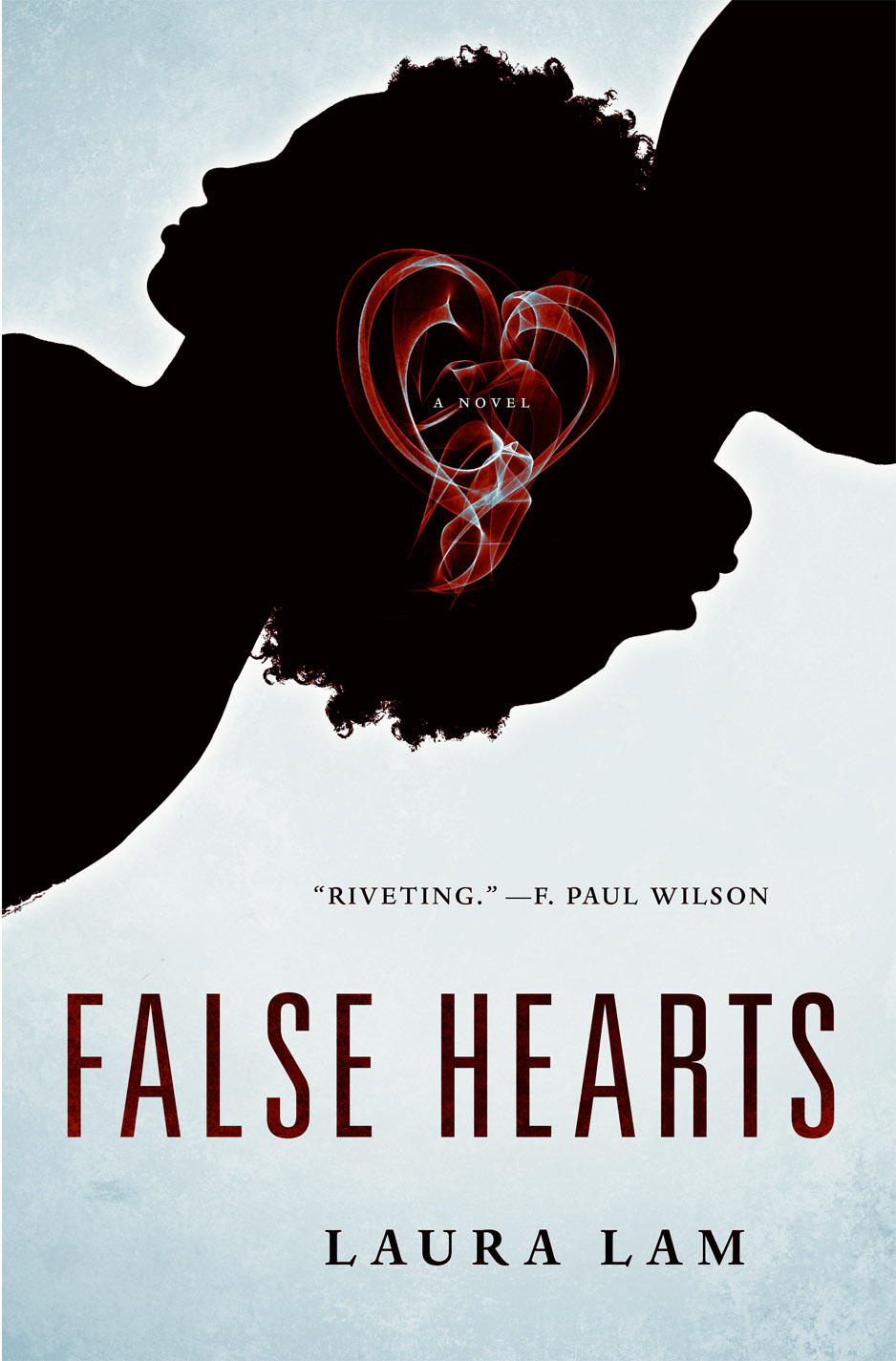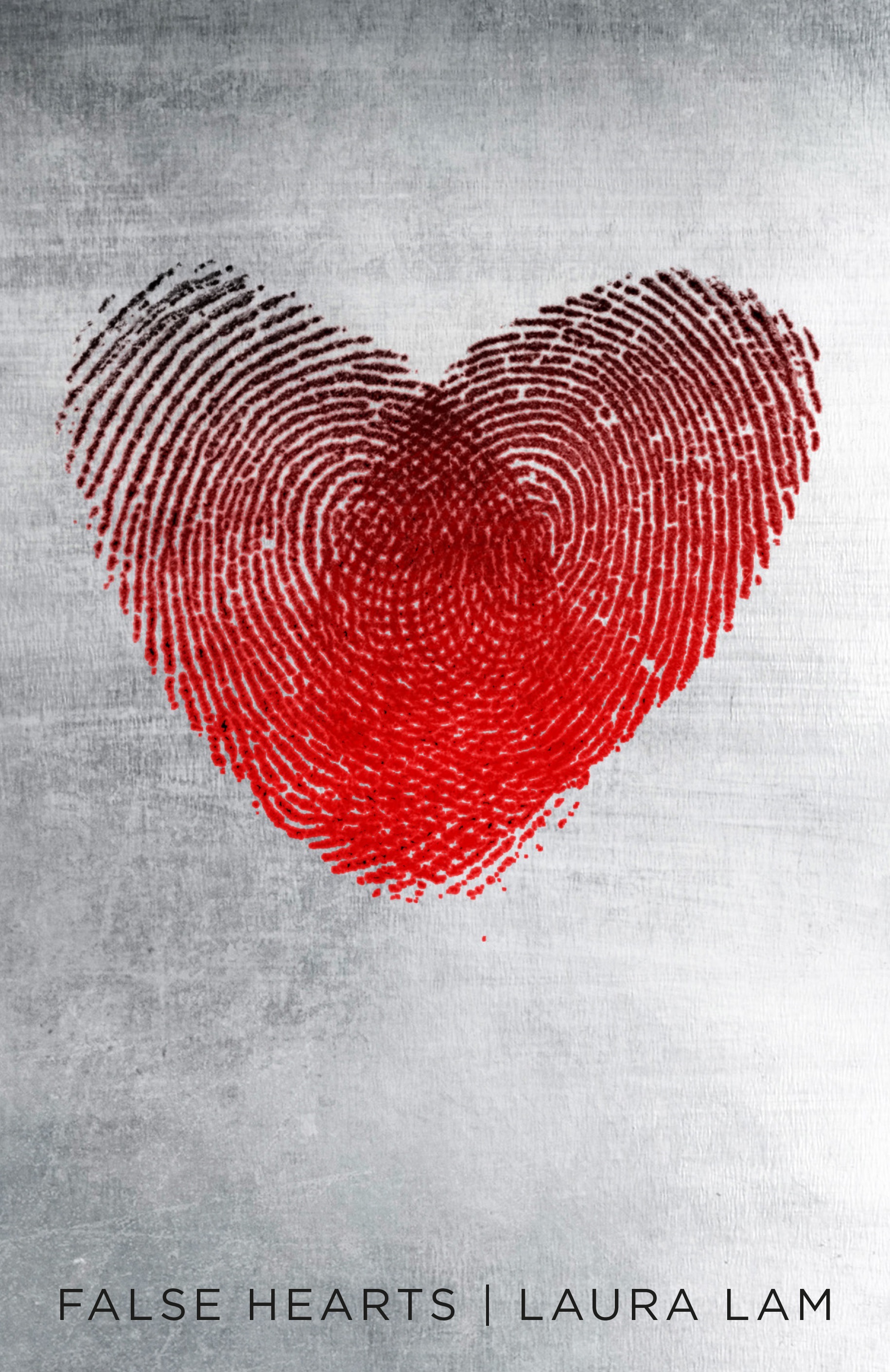 Laura Lam is joining us today with her novel False Hearts. Here’s the publisher’s description:
Laura Lam is joining us today with her novel False Hearts. Here’s the publisher’s description:
Laura Lam’s adult sci-fi debut False Hearts: Two formerly conjoined sisters are ensnared in a murderous plot involving psychoactive drugs, shared dreaming, organized crime, and a sinister cult.
Raised in the closed cult of Mana’s Hearth and denied access to modern technology, conjoined sisters Taema and Tila dream of a life beyond the walls of the compound. When the heart they share begins to fail, the twins escape to San Francisco, where they are surgically separated and given new artificial hearts. From then on they pursue lives beyond anything they could have previously imagined.
Ten years later, Tila returns one night to the twins’ home in the city, terrified and covered in blood, just before the police arrive and arrest her for murder–the first homicide by a civilian in decades. Tila is suspected of involvement with the Ratel, a powerful crime syndicate that deals in the flow of Zeal, a drug that allows violent minds to enact their darkest desires in a terrifying dreamscape. Taema is given a proposition: go undercover as her sister and perhaps save her twin’s life. But during her investigation Taema discovers disturbing links between the twins’ past and their present. Once unable to keep anything from each other, the sisters now discover the true cost of secrets.
What’s Laura’s favorite bit?


LAURA LAM
So far my process in writing books seems to be smooshing together my favorite things and seeing what comes out. In my Micah Grey gaslight fantasy series (Pantomime, Shadowplay & Masquerade), I mashed together gender and sexuality, the circus, Victorian magic, court intrigue, long-vanished civilisations, and the line between magic and technology. False Hearts, on the other hand, swirls together conjoined twins, cults, the mob, near-future San Fransisco, brain hacking, and dream drugs.
The setup of False Hearts is this: Taema and Tila were born as conjoined twins, joined at the chest, in a reclusive cult in the redwoods across the San Francisco bay known as Mana’s Hearth. There, everything is frozen in 1969 technology, and to change yourself in any way is considered sacrilege. When the twins’ shared heart starts to fail, it’s expected they’ll bow to the will of the Creator and let nature takes its course. Instead, they escape, but it’s not as easy as they’d hoped. Once they’re in San Francisco, the twins are separated and fitted with mechanical hearts. Ten years later, Tila is accused of murder in a world where crime is almost eradicated. SFPD give Taema a chance to save her sister: go undercover and assume her sister’s identity, and help break up the underground mob called the Ratel and their distribution of a new, dangerous dream drug called Verve.
These dream drug sequences are some of my favourite bits of the book, as I can end up bending reality and adding in some very creepy visuals. There are two strains of drugs: Zeal, which is licensed by the government and anyone can take. You plug in, work out your darkest nightmares, and it’s cathartic. When you come out, it has a soporific effect and makes you less violent in reality. Those that society think are high risk of becoming chronic criminals find the drug addictive. Verve is what the Ratel have created, and it makes you more violent after you take it, which is understandably going to be a problem for Pacifica if it becomes widespread. I’ll leave you with a small snippet of Taema going into a Zealscape dream sequence to ask a woman named Mia about what her sister might have been up to:
I hear the screams first.
The door opens for me into a barren room as long as the building. The concrete floor is cracked, the paint on the walls peeling off in layers. Exposed wires hang from the ceiling, and flickering overhead light casts a harsh light on the two figures before me.
One is Mia. She’s strong here as she no longer is in real life. Her bare arms ripple with muscle, the fitted jumpsuit hugging her full breasts and thighs. Her hair is long, like it was in Mana’s Hearth before she left when Tila and I were eight. But she is a long way away from the gentle woman in soft dresses that I recall. This Mia’s face is twisted in rage and bloodlust, and she’s wielding a scalpel stained with blood.
I shudder, my hand involuntarily going to the scar beneath my dress. Mia’s tool falls, and she bends over. My eyes finally rest on the other figure.
It’s Mana-ma.
Our former leader has collapsed to the ground. She’s alive, breathing hoarsely. The black robe she wears is heavy with blood. On her back, she gapes at the cracked ceiling, her mouth opening and closing. Mia has cut out her tongue. It lies next to her like a dead fish.
I cry out, stumbling away.
Mia pauses in her terrible work, her eyes meeting mine. Her face goes slack in surprise.
‘Taema.’
I’m dressed as Tila. I have her face, and her tattoo snaking down my thigh. Despite this, Mia still recognizes me.
‘Why are you here?’ she asks. ‘You’ve never been in my dreams before.’
That’s a comfort, I guess. She’s never wanted to kill me. Mia’s covered in blood, and the broken shell of a replica of the woman who leads Mana’s Hearth cowers beneath her.
‘Mia. Something’s happened to Tila. I need your help.’
‘You’re…not part of the dream?’ Mia seems confused.
Mana-ma gives a strangled gasp, more of a high wheeze. Without batting an eyelid, Mia brings down the scalpel into Mana-ma’s neck. The colors of the warehouse grow brighter, sharper, until they’re hypersaturated. I step back, horrified.
Without realizing what I’m doing, I focus on that mental state I found while in Mediation at the Hearth. The clear, calm stillness. ‘Stop,’ I say. Mia’s eyes widen, but her hand jerks back, taking the scalpel with her.
‘You don’t tell me what to do! Don’t make me do what I don’t want to!’ she shrieks.
Did I make her do that?
Blood spurts out of Mana-ma, and once the blood—the reddest blood I’ve ever seen—leaves her body, it turns from scarlet to black. The dark oil rises, covering Mana-ma’s corpse, and then the figure collapses into a puddle. It reminds me uncomfortably of the spread of blood of the crime scene recreation.
The scalpel is still in Mia’s hands. I hold up my own, spread wide, to look unthreatening. ‘No, I’m not part of the Zeal,’ I say. ‘They couldn’t pull you out, so I took a small dose and came in.’
Mia shakes her head. ‘I don’t know if I can believe that. They all say they’re real when they’re not. Either way, you shouldn’t have come. You’re too innocent for the Zealscape. Especially mine.’ Her face creases in a grin, and I take another step away. She is utterly transformed from the woman who took us in just after the surgery, when we were weak as kittens and just as innocent in the ways of the world. I remember the way she pushed my hair back from my face, kissed my forehead goodnight. She took us to museums on weekends, patiently explaining so many things to us that we didn’t understand. Mia, my second mother in many ways, is looking at me like she wants nothing more than to stick the scalpel in my eye.
She shakes her head again, mystified. ‘Can’t believe a girl who escaped the Hearth would ever step foot somewhere where they mess with your brain. Didn’t you have enough?’
‘Didn’t you?’ I counter.
That same sly grin. A gesture at Mana-ma. ‘Do you really think I actually escaped the Hearth? It’s always here.’ She taps her temple, and then considers me. ‘Maybe it’s still in you, too.’
LINKS:
BIO:
Laura Lam was raised near San Francisco, California, by two former Haight-Ashbury hippies. Both of them encouraged to finger-paint to her heart’s desire, colour outside the lines, and consider the library a second home. This led to an overabundance of daydreams. She relocated to Scotland to be with her husband, whom she met on the internet when he insulted her taste in books. She almost blocked him but is glad she didn’t. At times she misses the sunshine.

Laura Lam is joining us today with her novel False Hearts. Here’s the publisher’s description